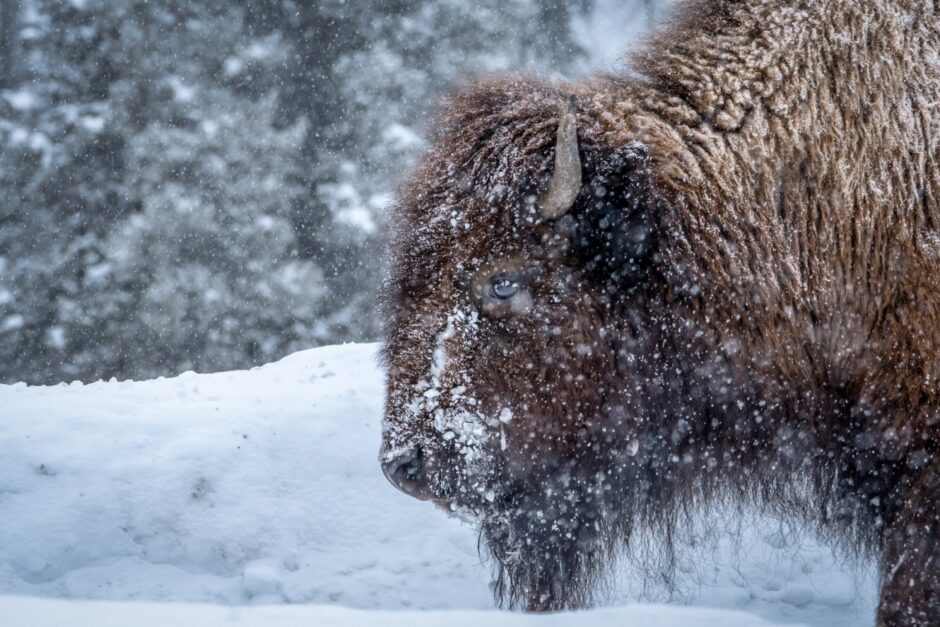
Field Guide to Photographing Bison
You want to know my favorite fact about bison? They used to be found in 49 out of 50 states in the US. As you might expect, the hardy critters never managed to swim to Hawaii. Look outside your window; 300 years ago, you would have almost certainly seen bison. Today, they are the one animal that singularly defines the American West. It’s our national mammal after all. They’re equal parts prehistoric and photogenic; massive, moody, and draped in enough fur to make a grizzly jealous. Photographing them in Yellowstone and Grand Teton National Parks is one of those classic western experiences that turns every photographer, no matter how seasoned, into a wide-eyed kid again.
But let’s be honest; bison aren’t the easiest subjects. They’re dark, bulky, unpredictable, and prefer to stand in the worst possible light. Still, with a bit of patience, the right gear, and some understanding of their behavior, you can come home with images that capture both their power and the landscapes they represent today.
Where to Find Them (Really, try NOT to see one)
What do they say about life’s two guarantees? Death and taxes? As a guide in Yellowstone & Grand Teton NP ; the only two things I guarantee to my guests is Old Faithful and bison. In Grand Teton National Park, Elk Ranch Flats is your jackpot. There, the bison graze in front of the jagged Teton Range; a background so perfect it feels like cheating.
In Yellowstone, bison are possible anywhere, but focus on Lamar and Hayden Valleys; both are home to large herds. Lamar’s rolling sage hills make for layered backgrounds, while Hayden’s wide meadows and morning mist drifting off the river give a sense of scale and serenity. For something different, head to Lower Geyser Basin, Fountain Paint Pot, or Old Faithful. Watching a herd wander through rising geothermal steam feels like photographing a scene from the Ice Age.
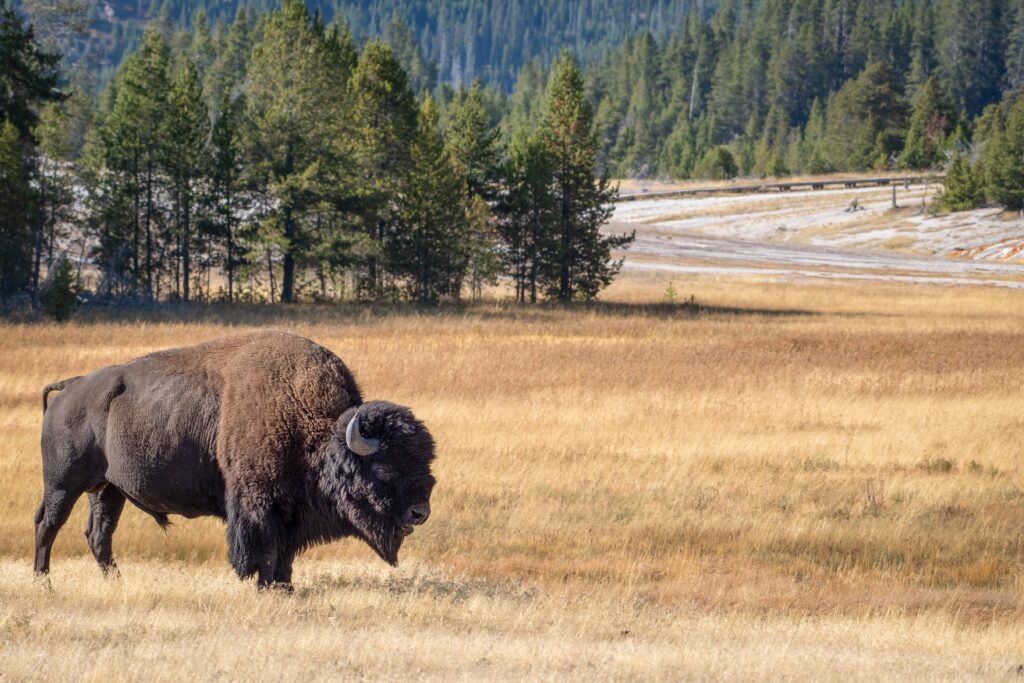
Gear and Settings (Let’s talk tech)
I usually work with three lenses for bison, depending on what story I want to tell:
- 70–200mm: for wide environmental compositions where the landscape carries as much visual weight as the animal.
- 100–400mm: for behavior and medium-distance frames.
- 200–600mm: for close-up portraits, textures, and tight detail work.
Because bison move in slow motion (except when they don’t), I match my shutter speed roughly to my focal length or just above; 1/200–1/600 sec for calm scenes. When the action starts, like dust-bathing or sparring, I bump up to 1/1600 or faster. My aperture usually runs f/5.6–f/8, depending on distance, and I set my ISO to auto to adjust with the changing light. Their fur can trick your metering system, especially against bright snow or sky. Add +0.3 to +0.7 exposure compensation to keep from losing those deep brown details.
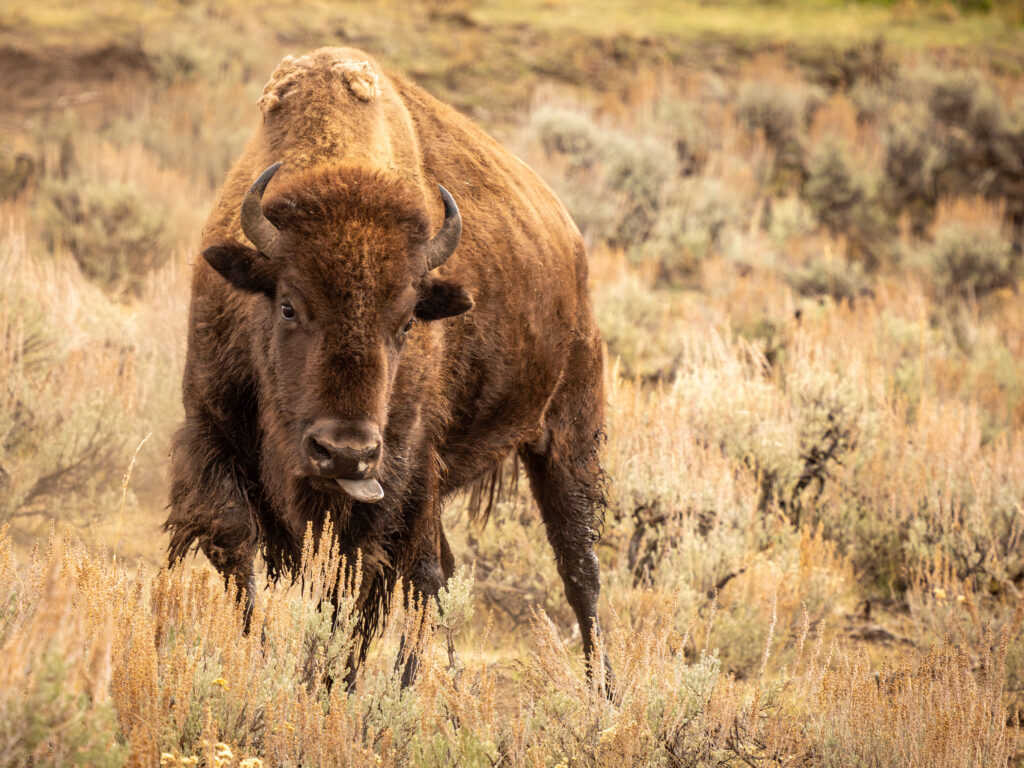
Fieldcraft (a Fancy Word for Not Getting Gored)
Every good bison photo starts with respect. These are 2,000-pound tanks with hooves and an attitude, and the difference between a good photographer and a foolish one often comes down to a few yards of space. Bison behavior is predictable, until it isn’t. The trick is learning to read their mood. Watch the direction of travel: if a herd is walking toward you, stay put. You’ll get better posture, more eye contact, and that sense of purposeful motion that makes a photo feel alive.
I like to set up where bison already plan to go (near a trail, open meadow, or the edge of a wallow) and then wait. Sometimes that wait is ten minutes; sometimes it’s an hour. It’s quiet, meditative work: you listen to grunts, the shuffle of hooves, and maybe your own heartbeat. Don’t rush the shot. Bison have a rhythm to their movements. Watch for when they lift their heads to check the wind or shake frost from their fur; that’s your moment. Patience is your most powerful setting.
Keep an eye out for wallows, those shallow depressions where they roll in dust, especially during the fall rut. A pawing animal is your warning; you’ve got seconds before a full-blown dust storm. In winter, look for the frost. Early mornings near the Madison River or the geyser basins can reveal bison rimed in ice, their breath crystallizing in the cold air like smoke.
And of course, mind your distance. Twenty-five yards is the official minimum, but let’s be honest: that’s the “barely safe” setting. A long lens keeps you comfortable and, more importantly, intact. Photographing from your vehicle can work well, just make sure you’re parked off the road and out of traffic. If you’re eyeing a bull during the rut, steer clear. Local rental car agencies know all too well what bison damage looks like.
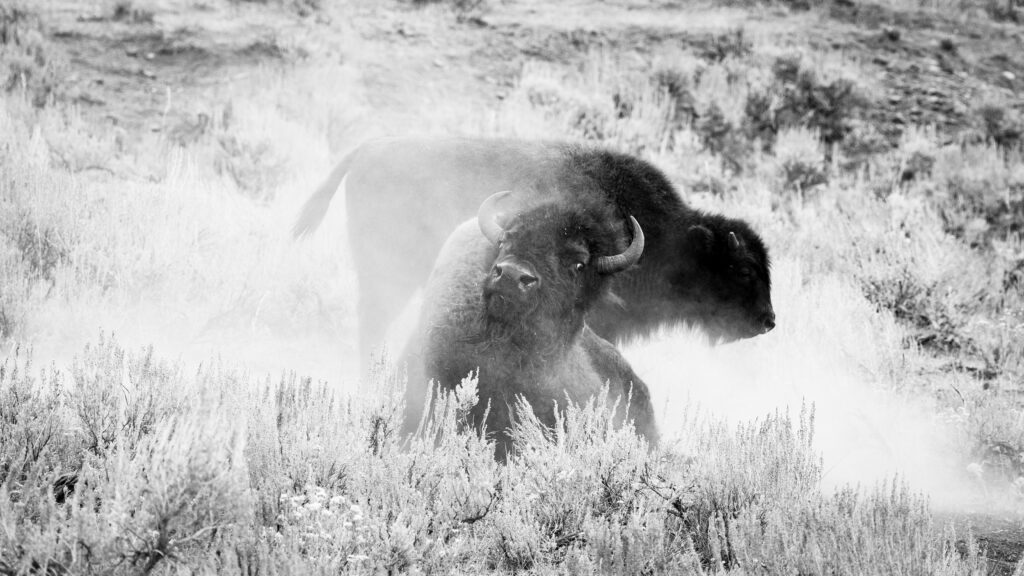
Composition and Storytelling
There’s no single “right” way to photograph a bison. They’re wonderfully versatile subjects if you slow down and experiment.
- Full-body portraits: Wait for even light or sidelight to carve definition across the hump and shoulders.
- Head portraits: Get eye-level and fill the frame. Their eyes are small but deeply expressive.
- Landscapes with bison: Step back and let the animal anchor the grand scene; a herd under stormy skies, steam rising behind, or a single bull silhouetted at dawn.
- Close-ups: Zoom way in. Capture the curve of a horn, the coarse mat of shedding fur, or a hoof pressing into fresh snow. These small details reveal the story of endurance.
- Action: Breath vapor, rolling dust, snow flying; these fleeting moments transform simple wildlife shots into storytelling frames.
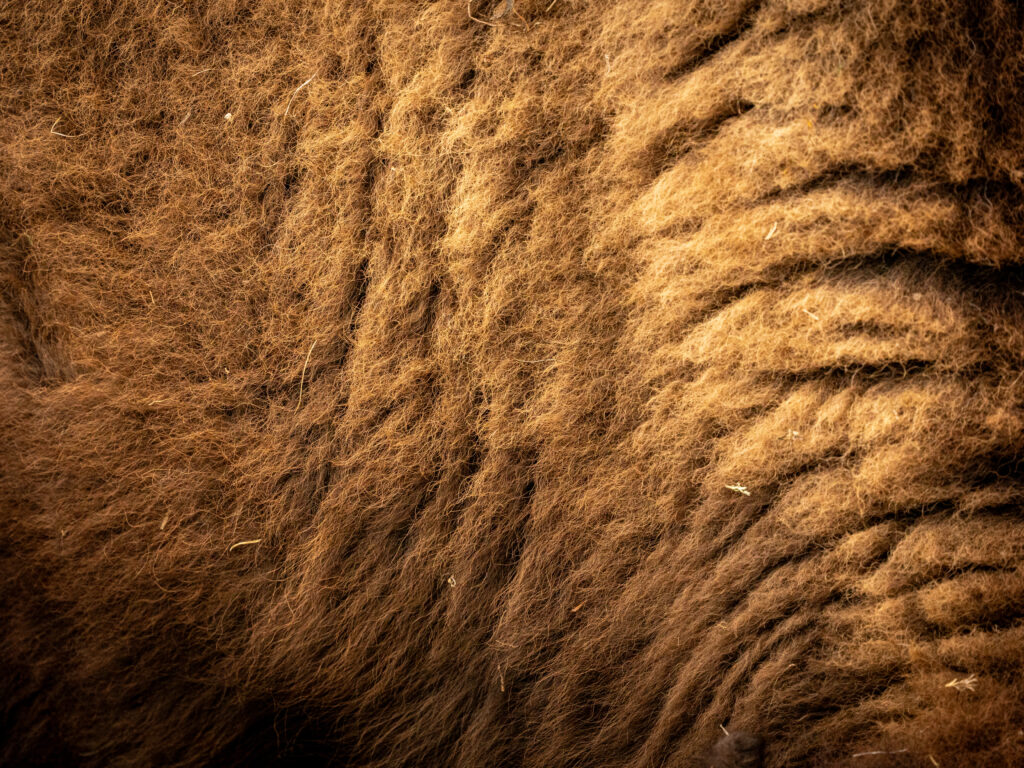
Seasons of the Bison
Each season offers a completely different look and mood:
- Spring: Calves (or “red dogs”) wobble beside their mothers. Lamar and Hayden Valleys glow sage green, and the young add an irresistible pop of color.
- Late Summer: Dust, drama, and the rut. Bulls bellow, roll, and chase. Wallow scenes and low evening light rule.
- Fall: Golden grass and shaggy coats. Bulls still strut, but the energy settles into calm, photogenic patterns.
- Winter: Frost bison season. Steam, ice, and silence. The contrast of dark fur against snow feels almost monochromatic; minimalist and moody.
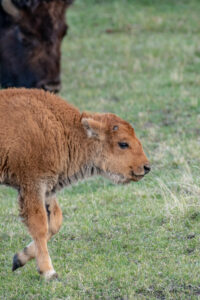
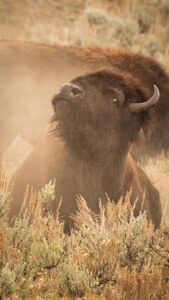
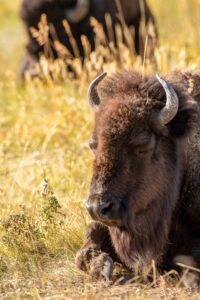
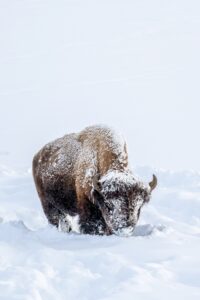
Wrapping It All Together
Photographing bison in Yellowstone and Grand Teton isn’t just about capturing wildlife; it’s about photographing the living heartbeat of the American West. Spend enough time in these valleys, and you’ll start to feel the rhythm of the place: the breath of morning fog, the rumble of hooves, the quiet strength of a species that nearly disappeared but didn’t.
Every photo; whether it’s a tight head shot or a sweeping landscape; carries that weight of survival and wildness. And that’s what makes bison photography so rewarding: it’s not just an image of an animal, it’s a portrait of endurance itself.
If you want to photograph these icons for yourself, join our Yellowstone or Grand Teton Photo Expeditions with Natural Habitat Adventures. From frost-coated bulls in the geyser mist to sunset herds under the Tetons, you’ll experience the full story of America’s wildest symbol through your lens.
Happy photographing,

Leave a reply